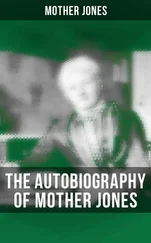1 ...8 9 10 12 13 14 ...76 Another potent myth about inheritance is that the characters of a mother and a father pass to their blood, which is mixed in their offspring. Children are, as a result, a blend of the attributes of their parents. This idea — a sort of genetics of the average — copes quite well with traits such as height or weight but fails to explain why a child may look like a distant relative rather than its father or mother. The idea lasted until just a few years ago. The stud book is the record kept by racehorse breeders. A mare who had boriu 1;i foal by mating with a non-stud stallion was struck off as her blood was deemed to be polluted. Indeed, n survey of elderly women in Bristol showed that half believed in the chance of a woman having a black baby if she had sex with a biack man many years before. The croiu-s ot the west country, like the breeders of horses, had never managed to work out the instructions for the reproductive game.
The only section of The Origin of Species which does not make good reading today is Chapter Five, 'Laws of Variation'. Darwin got it wrong and, after much agonising, suggested that the organs of parents passed material to the blood and then to sperm and egg. Children were, he thought, intermediate between those who produced them. Such a mode of inheritance would be fatal to the idea of evolution. The problem was pointed out by Fleeming Jen-kin, the first Professor of Engineering at the University of Edinburgh. Writing in 1867 — and with a sturdy disregard of today's proprieties — Jenkin imagined ka white man wrecked on an island inhabited by negroes. Suppose him to possess the physical strength, energy and ability of a dominant white race. There does not follow the conclusion that after a… number of generations the inhabitants of the island will be white. Our shipwrecked hero would probably become king;… he would have a great many wives, mil L'hiklrrn.. much superior in average intelligence to the negroes, but can anyone believe that the whole island will gradually acquire a white or even a yellow population? A highly favoured white cannot blanch a nation of negroes.'
Jenkin saw that the attributes of a distant ancestor, valuable as they might be, are of little help to later generations if bloods mix. Characters would then blend over the years until their effects disappear. I lowevcr useful an ink drop in a gallon of water might be at some time in the future it is impossible to get it back from;i sm^lr mixi-d drop. Genetics by blending means that any adv.iiii.i^iousch.iiMc-ter would be diluted out in the next generation. Fortunately, the blood myth is wrong.
It was shot down by (ialtnn himself. He transfused blood from a black rabbit to a white to see if the latter had black offspring. It did not. Inheritance by dilution had been disproved, but Galton had nothing to put in its place.
Unknown to either Darwin or to his cousin the rules of genetics had already been worked out by another biological genius. Gregor Mendel lived in Bohemia and published in a rather obscure scientific journal, the Transactions of the Brunn Natural History Society. His breakthrough was overlooked for thirty-five years after it was published in 1866. Mendel, an Augustinian monk, attempted a science degree but failed to complete it. Like Darwin and Galton he suffered from bouts of depression which prevented him from working for months at a time. Nevertheless, he persisted with his experiments. He found that the inherited message is transmitted according to a simple set of regulations — the grammar of the genes. Later in his career (and setting a precedent for the present age) he was unable to continue with research because of the pressures of administration. The study of inheritance came to a halt for almost half a century.
Grammar is always more tedious than vocabulary, but cannot be avoided. The rest of this chapter explores the basic rules of genetics. Those who teach the subject still have an obsession with Mendel and his peas and I make no excuse for having them as a first course.
Mendel made a conceptual breakthrough. Instead of (like his predecessors) working on traits such as height or weight (which could only be measured) Mendel was more or less the first biologist to count anything. This put him on the road to his great discovery.
Peas, like many garden plants, exist in true-breeding lines within which all individuals look the same. Different lines are distinct in characters such as seed shape (which can be round or wrinkled) and seed colour, which may be yellow or green. Peas also have the advantage that each plant carries both male and female organs. Using a small brush it is possible to fertilise any female flower with pollen from any male. Even a male flower from the same plant can be used. The process, a kind of botanical incest, is called self-fertilisation.
Mendel added pollen (male germ cells) from a line with yellow peas to the female part of a flower from a green pea line. In the next generation he got an unexpected result. Instead of all the offspring being intermediate, all the plants in the new generation looked like one of the parents and not the other. They all had yellow peas. This is not at all what would be expected if the 'blood' of the two lines was blended into a yellowish-green mixture.
The next step was to self-fertilise these first-generation yellow plants; in other words to expose their eggs to pollen from the same individual. That gave another unforeseen outcome. Both the original colours, yellow and green, reappeared in the next generation. Whatever it was that produced green could still do so, even though it had spent time within a plant with yellow peas. This did not fit at all with the idea that the different properties of each parent were blended together. Inheritance was, his experiment showed, based on particles rather than fluids.
Mendel did more. He added up the numbers of yellow and green peas in each generation. In the first generation (the offspring of the crossed pure lines) all the plants had yellow peas. In the second, obtained by self-fertilising the yellow plants from the first generation, there were always, on the average, three yellows to one green. From this simple result, Mendel deduced the fundamental rule ol genetics.
Pea colour was, he thought, controlled by pairs of factors (or genes, as they became known). Kadi adult plant had two factors for pea colour, but pollen or egg received only one. On fertilisation — when pollen met egg — a new plant with two factors (or genes) was reborn. The colour of the peas was determined by what the plant inherited. In the original pure lines all individuals carried either two *yellow' or two 'green' versions of the seed colour gene. As a result, crosses within a pure line gave a new family of plants identical to their parents.
When pollen from one pure line fertilised eggs from a different line new plants were produced with two different factors, one from each parent. In Mendel's experiment these plants looked yellow although each carried a hidden set of instructions for making green peas. In other words, the effects of the yellow version were concealing those of the green. The factor for yellow is, we say, dominant to that for green, which is recessive.
Plants with both variants make two kinds of pollen or egg. Half carry the instructions for making green peas and half for yellow. There are hence four ways in which pollen and egg can be brought together when two plants of this kind are mated, or a single one self-fertilised. One quarter of fertilisations involve yellow with yellow, one quarter green with green; and two quarters-one half-yellow with green.
Mendel had already shown that yellow with green produces an individual with yellow peas. Yellow with yellow, needless to say, produces plants with yellow peas, and in a plant with two green factors the pea is green. The ratio of colours in this second generation is therefore three yellow to one green. Mendel worked backwards from this ratio to define his basic rule of inheritance.
Читать дальше
Конец ознакомительного отрывка
Купить книгу












